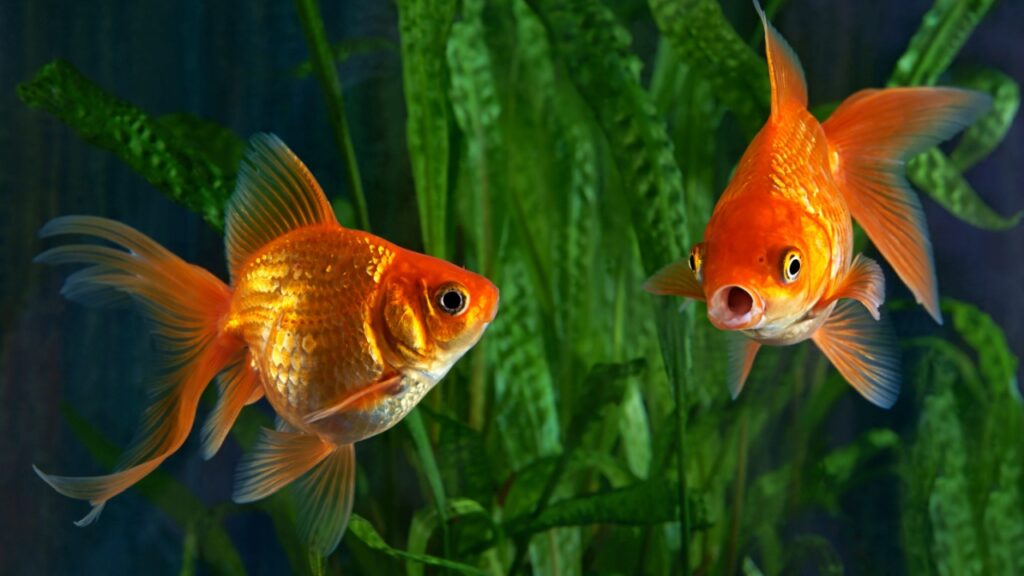
Many animal myths and legends persist even though they’re not true. Some are urban legends, while others are just misunderstood behaviors. Learning the facts about these creatures can help clear up any confusion and give a better understanding of how these creatures act and why.
Most Popular Beliefs
Bats Are Blind
Myth: Bats are blind.
Truth: Most people have heard the phrase “Blind as a bat.” But contrary to popular belief, no bat species are blind. While some bats have better night vision than others, they all have the ability to see. They use echolocation in tandem with their eyesight to navigate and find food in the dark.
Goldfish Have A Three-Second Memory
Myth: Goldfish have a 9-second attention span
Truth: Goldfish actually have a rather impressive memory for fish, and they can remember up to several months. Experiments have shown that goldfish can be trained to respond to various stimuli, indicating that they retain memory far beyond the nine-second myth that most people are familiar with.
Ostriches Bury Their Heads in Sand
Myth: When afraid, ostriches bury their heads in the sand
Truth: This myth is a misrepresentation. Ostriches don’t bury their heads in the sand; they dig nests for their eggs and may put their heads in the hole to turn the eggs. When threatened, ostriches either flee or lie flat to avoid detection, not bury their heads.
Marine Animal Misconceptions
The ocean is a deep and mysterious place, so it’s no surprise that marine life is often shrouded in myths that distort the truth about sea creatures’ behavior and biology.
Sharks Can’t Get Cancer
Myth: Sharks are immune to cancer.
Truth: Research indicates that sharks can indeed develop cancer. Tumors have been found in sharks, albeit at possibly lower rates than in other species, which has piqued scientific interest.
Dolphins Are Always Friendly
Myth: Dolphins exhibit a constant friendly demeanor towards humans.
Truth: Dolphins, like any wild animal, have complex behaviors and can be unpredictable. There have been reports of dolphins showing aggression towards humans and other marine animals.
Whales Spout Water From Their Blowholes
Myth: Whales eject water from their blowholes like a fountain.
Truth: When whales surface, they expel air rapidly, which condenses and creates a mist that appears to be water. The spout is actually mostly vapor and does not involve them shooting water from their lungs.
Bird-Related Myths
Numerous misconceptions about birds exist, and we aim to put a few of the most persistent ones to rest.
Owls Can Rotate Their Completely Around
Myth: Owls can rotate their heads 360 degrees.
Truth: Owls have a remarkable range of neck motion; however, they cannot rotate their heads a full 360 degrees. They can turn their necks up to 270 degrees in either direction, which means they can look behind their shoulders but not in a full circle. This flexibility is due to their specialized vertebral structures.
Penguins Only Live on the Seventh Continent
Myth: Penguins can only be found in Antarctica.
Truth: While penguins are synonymous with the icy landscapes of Antarctica, they inhabit various other areas. Species of penguins can be found on the coasts of South America, Africa, Australia, and multiple islands in the Southern Hemisphere. The Galápagos Penguin, for instance, resides near the equator.
All Birds Can Fly
Myth: If a bird has wings, it can fly.
Truth: Not all birds possess the ability to fly. Flightless birds like ostriches, emus, and kiwis have evolved in ways that suit ground living, with adaptations such as strong legs for running and smaller wing sizes. These species are evidence of the incredible diversity of the bird kingdom.
Unraveling Mammal Myths
Mammals are not exempt from myths and misconceptions. Let’s demystify some of the tales surrounding our mammalian counterparts.
Camels Don’t Need Water Because They Store it in Their Humps
Myth: Camels store water in their humps.
Truth: A common misconception is that camels use their humps as reservoirs of water. In truth, the humps are filled with fatty tissue, not water, and serve as energy reserves. Camels are incredibly efficient at managing water and can go for long periods without drinking, thanks to their physiological adaptations.
Porcupines Shoot Their Quills
Myth: You can get hit with a porcupine quill if you get too close.
Truth: It’s widely believed that porcupines can shoot their quills at predators. However, porcupines cannot actually project their quills; the quills are simply released upon contact. The barbed nature of the quills makes them stick to — and penetrate — the flesh of any animal that gets too close, serving as an effective defense mechanism rather than an offensive weapon.
The Myth of Cow Tipping
Myth: You can tip a cow over while it’s sleeping standing up.
Truth: The idea of cow tipping, where a person sneaks up on a sleeping, standing cow to push it over, has been a popular urban legend. However, cows do not sleep standing up—they lie down to sleep. Moreover, cows are large, heavy animals, and tipping one over would require significant force, making the feat practically impossible to achieve alone and highly unlikely in reality.
Ellen has been obsessed with logic puzzles, jigsaws, and cryptograms since she was a kid. After learning she was taught how to play chess wrong by a family friend (so they could win), she joined her school chess club and the rest is history.

